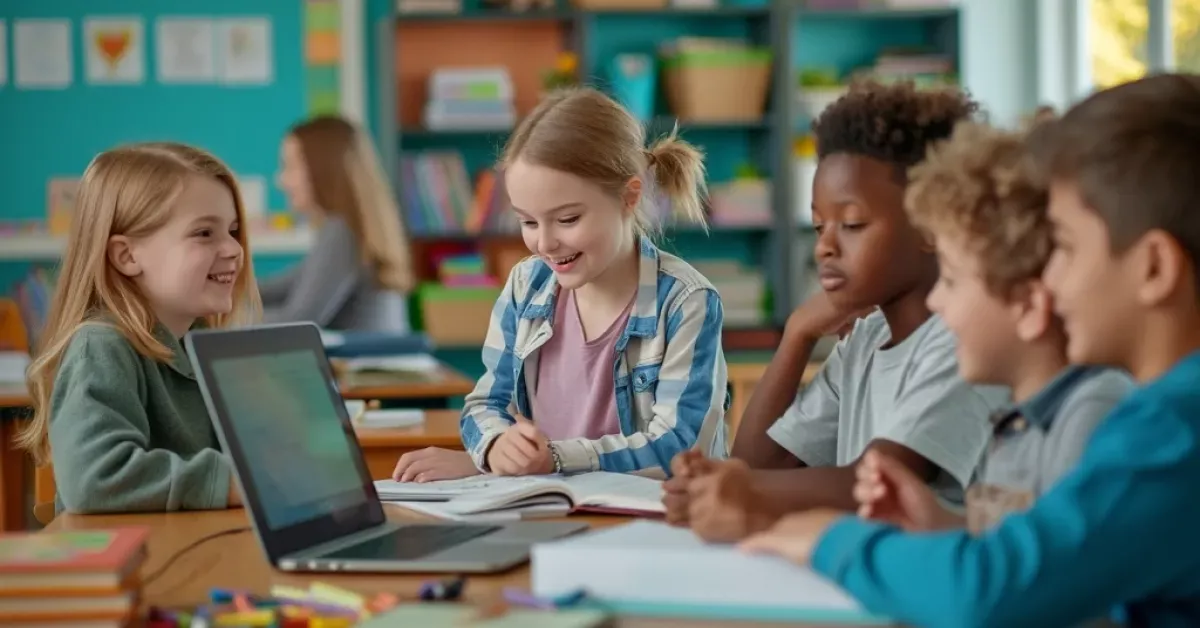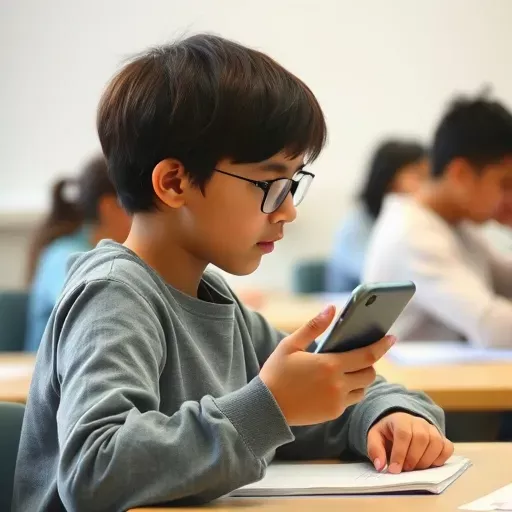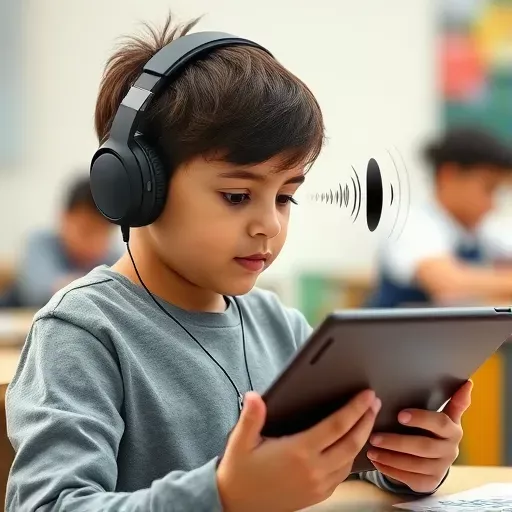In today’s rapidly changing world, technology continues to reshape every aspect of our lives, including education. One of the most impactful advances is Text-to-Speech (TTS) technology, a tool that transforms written text into spoken words. This technology is not just a novelty but a crucial educational aid that enhances learning experiences across different settings. By making content more accessible and engaging, TTS is revolutionising how students learn, catering to varied learning styles, and ensuring no student is left behind.

Revolutionising Learning: The Power of Text-to-Speech Technology
Text-to-Speech is a game-changer in education by converting written information into audible content. This innovation enables students to process information more effectively, particularly those who benefit from auditory learning. Whether it’s reading a complicated textbook or engaging with interactive learning materials, TTS offers students an opportunity to understand content in a way that suits their individual needs.
Transforming Text into Speech
TTS thrives on simplicity: it reads digital text aloud. For instance, students with reading difficulties can hear the text, which may help them better understand the material. By giving words a voice, TTS makes complex subject material more relatable. This transformation from written to spoken content benefits everyone, from primary students to university learners.
Educational Tools for Learning Enhancement
TTS technology comes equipped with features like adjustable speaking rates, diverse voice options, and the ability to highlight text as it reads, fostering active and engaged learning. These tools work collectively to break down barriers in understanding, ensuring students grasp educational content more robustly.
Promoting Digital Accessibility with TTS
In a digitally connected world, accessibility is key. TTS plays a significant role in making education more inclusive, allowing all students, regardless of their physical or learning challenges, to access educational resources with ease.
Access for Students with Visual Impairments
For students with visual impairments, TTS is a lifeline. It enables them to engage with written material independently. Whether navigating textbooks, exploring online resources, or participating in digital classrooms, TTS ensures that vision restrictions do not hinder a student’s access to knowledge.
Supporting Learning Disabilities
Students with learning disabilities like dyslexia find TTS incredibly beneficial. Instead of struggling with the reading process, they can listen to the content, which often enhances comprehension and reduces frustration. This supportive technology turns learning into a more manageable and enjoyable experience, promoting educational success.
Assistive Technology: Fostering Inclusive Learning
Assistive technologies like TTS are vital in creating inclusive learning environments. By offering voice-to-text learning aids, educators can ensure all students, regardless of their learning preferences or needs, receive equal opportunities to thrive academically.
Voice-to-Text Learning Aids
Voice-to-Text (VTT) technology complements TTS by allowing students to dictate text instead of typing, which is particularly advantageous for those with motor difficulties or who struggle with traditional writing processes. This synergy of technologies broadens accessibility further, offering personalised educational experiences.
Diverse Student Populations
Classrooms today are more diverse than ever, with students from various backgrounds and abilities. TTS aids in bridging these differences by offering a level playing field. By catering to auditory learners, kinesthetic preferences, or those needing additional support, TTS demonstrates versatility in education.
TTS in Schools
Schools are increasingly adopting TTS within their curriculums. By integrating TTS into everyday classroom activities, educators can cater to different learning styles, enriching the educational experience. This integration not only assists students who may struggle with traditional reading but also offers an alternative learning method that can complement standard practices.

A classroom scene highlighting the use of voice-to-text technology for inclusive education.
TTS & Cognitive Support: Effective Studying Strategies
TTS contributes significantly to cognitive support, aiding students in developing effective study strategies that can improve academic performance and understanding.
Varied Learning Styles
Everyone learns differently. While some might excel with visual cues, others may find auditory input more beneficial. TTS supports varied learning styles, ensuring all students can engage with the material in a way that suits them, enhancing both enjoyment and retention.
Boosting Student Performance
Studies suggest that pairing reading with listening can boost memory retention and comprehension. By giving students the option to hear their study material, TTS helps in fortifying learning, enabling students to perform better academically through multifaceted engagement.
Classroom Tools: TTS as Digital Reading Aids
Incorporating TTS as a digital reading aid transforms classroom dynamics by broadening learning avenues and aiding in deeper content comprehension.
Facilitating Comprehension
Students often absorb information more effectively when they can hear it. TTS delivers this auditory support, helping students tackle challenging texts and concepts by improving their ability to comprehend and retain information. This support is particularly beneficial in complex subjects like literature or history.
Enhancing Information Retention
Through TTS, students are presented with multiple avenues to engage with content, increasing their ability to remember and recall information. The auditory reinforcement provided by TTS ensures that key concepts and details remain top-of-mind, facilitating stronger academic outcomes.

A student engages with TTS technology, enhancing comprehension and retention.
Breaking Barriers: TTS in Educational Software
TTS isn’t just about reading text aloud; it plays a crucial role in educational software as a tool for breaking down barriers, providing support in language and literacy.
Improving Learning Accessibility
Educational software equipped with TTS levels the playing field by improving learning accessibility for all students, regardless of ability or background. This enhancement allows educators to focus on teaching rather than the technology itself.
Language and Literacy Support
By offering pronunciation and vocabulary understanding, TTS assists students who may struggle with language or literacy challenges. These features help students grasp language nuances, improving their literacy skills alongside their overall learning.
Impact on Student Engagement
With TTS, learning becomes more interactive and enjoyable. Students often find auditory elements engaging, leading to increased focus and participation. This impact on student engagement drives motivation, resulting in a more dynamic and sustained interest in schoolwork.
Audio Learning for Interactive Education
TTS enables a new dimension of interactive education by turning static text into dynamic, lively learning experiences. This shift changes the way students process information, stimulating both understanding and curiosity.
Tech for Education: Enhancing Study Tools
As technology evolves, educational tools like TTS become more sophisticated, making study sessions more productive. These advancements create opportunities to enhance study materials through interactive elements that are both informative and engaging.
Cognitive and Memory Retention Benefits
Listening to information can support cognitive processes involved in memory retention. By helping students listen rather than just read, TTS fosters new ways of processing and retaining educational content, ultimately improving student success rates.
Practical Incorporation: TTS in Teaching Strategies
For educators, incorporating TTS into teaching strategies is vital in addressing educational challenges and fulfilling the varied needs of students.
Addressing Educational Challenges
TTS equips educators with the tools to address a range of educational challenges, from engaging reluctant readers to supporting English language learners. By tailoring teaching methods to leverage TTS, teachers can meet diverse student needs more effectively.
Training and Support for Educators
To maximise the benefits of TTS, educators must receive proper training and support. Providing workshops and resources ensures teachers can confidently and creatively integrate TTS into their lesson plans, enhancing their teaching effectiveness.
Creating an Engaging Learning Experience
An engaging learning experience is one where students feel motivated and supported. TTS contributes by creating a dynamic classroom environment where students of all abilities can explore, participate, and learn without barriers.
The advent of TTS technology in education heralds a new era of inclusive, engaging, and accessible learning. By integrating TTS into various educational tools and strategies, both students and educators can experience a richer, more interactive educational journey. As technology advances, the role of TTS will likely expand, offering even more innovative ways to foster learning and accessibility. For a future where every student has the opportunity to succeed, embracing tools like TTS could be key to unlocking their potential.
Tips for Utilizing TTS in Education
- Integrate TTS in everyday classroom activities to cater to different learning styles.
- Leverage TTS to aid students with reading difficulties or learning disabilities.
- Encourage students to use TTS as part of their study routines to enhance retention.
- Provide educators with training on effectively using TTS to maximise its benefits.
Common Mistakes with TTS Usage
- Over-reliance on TTS at the expense of traditional reading skills.
- Failure to provide educators with adequate training on TTS tools.
- Ignoring diverse learning needs by using a one-size-fits-all TTS approach.
- Neglecting to adjust TTS settings for optimal student understanding and engagement.
By recognizing the potential of TTS and addressing common challenges, educational institutions can create supportive and captivating environments that invite success for all students.
